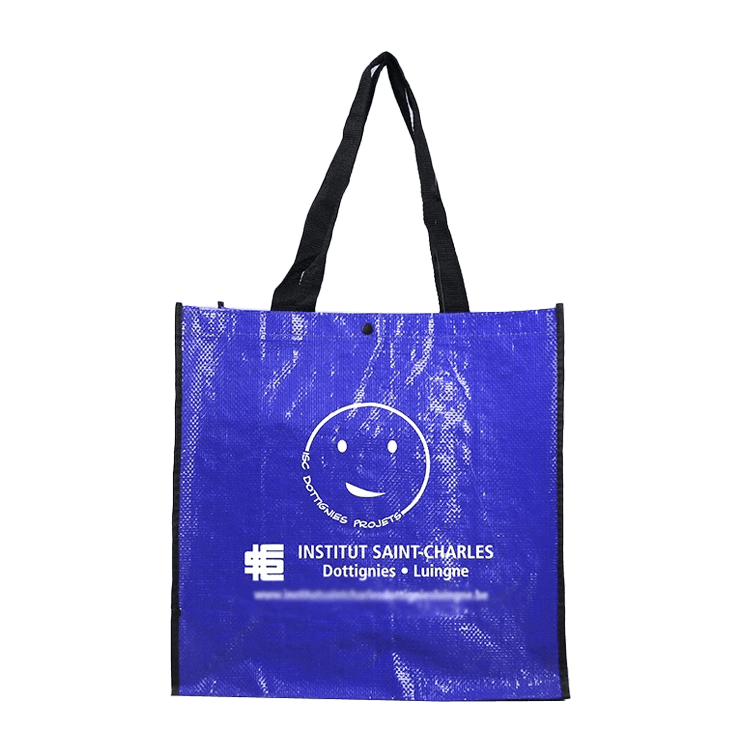Color is a powerful tool in design, often shaping a customer's first impression before a word is read or a product is touched. In the world of retail and reusable products, the woven shopping bag has emerged not only as a functional item but also as a canvas for branding, storytelling, and emotional engagement. Among the many elements that contribute to the success of woven shopping bag designs, color stands out as one of influential. Through strategic color choices, brands can evoke emotion, communicate values, and influence buyer behavior—all through the simple yet impactful design of woven plastic bags and woven grocery bags.

Understanding the Emotional Impact of Color
The human brain processes color almost instantly, associating it with emotions, memories, and meanings based on cultural, social, and even personal experiences. For designers working with woven shopping bags, understanding the psychology of color is crucial. A bright red bag might evoke urgency or excitement, ideal for a fast-moving retail brand. On the other hand, a calming blue woven grocery bag could suggest freshness, cleanliness, or trust, making it great for health food markets or organic product retailers.
Colors like green, often associated with nature and sustainability, are popular choices for woven plastic bags that aim to promote eco-friendliness, even if they are made from recycled synthetic materials. This perceived alignment with green values helps position these bags as part of an environmentally conscious lifestyle, even before the material is touched or examined.
Woven Shopping Bags: More Than Just Utility
Woven shopping bags are widely used across various industries due to their strength, reusability, and cost-effectiveness. However, their success in the marketplace is not based on utility alone. successful woven shopping bags are those that combine function with visual appeal—especially through thoughtful color choices. Whether sold at retail, given away at events, or used as promotional items, these bags act as walking billboards. Their colors help determine whether they'll be reused proudly or shoved in a drawer, never to be seen again.
A black or dark-toned woven shopping bag may convey elegance and sophistication, making it suitable for luxury brands or formal retailers. In contrast, cheerful hues like orange, yellow, or pink on woven grocery bags might reflect energy, friendliness, and affordability—qualities that attract a broader consumer base in supermarkets and casual retail settings.
Cultural Sensitivities and Regional Preferences
One of the challenges in choosing colors for woven plastic bags is accounting for cultural differences. In some cultures, white may symbolize purity and cleanliness, while in others, it can be associated with mourning. A red woven grocery bag may symbolize good luck in East Asia but signify danger or warning elsewhere. Successful brands take time to research their target markets and tailor the color schemes of their woven shopping bags accordingly.
For example, a brand launching in Southeast Asia might choose gold and red for woven plastic bags to tap into local beliefs around prosperity and good fortune. A European organic grocery chain, by contrast, may opt for earth tones like forest green, beige, or terracotta to align with minimalist and natural aesthetics that dominate the region.
The Role of Contrast and Typography
While the base color of a woven shopping bag sets the tone, contrast and text placement are equally important. High contrast between the background color and brand logo ensures readability and visibility from a distance. For instance, a white logo on a navy blue woven grocery bag stands out much more than subtle shades that may blend into each other. This attention to detail can significantly impact how often the bag is used in public—and by extension, how often the brand is seen.
Typography also plays a role in complementing the color scheme. Playful fonts on vibrant woven plastic bags can suggest fun and approachability, while clean, modern fonts on monochrome woven shopping bags reinforce professionalism and trust.
Sustainable Perception Through Color
Interestingly, color can also influence how sustainable a bag is perceived to be. Many consumers associate green, brown, or cream-colored woven grocery bags with environmental friendliness, even if the bag is made from synthetic materials. Marketers understand this subconscious link and often use these tones to signal a bag's eco-friendly nature, sometimes reinforced with printed messaging about the materials used or the bag's recyclability.
Woven plastic bags, especially those made from recycled materials, often face skepticism from eco-conscious buyers. Using color psychology to bridge this gap—through earthy tones or natural textures in the print design—can help improve consumer trust and encourage reuse.



 English
English Español
Español عربى
عربى







